Wi-Fi Problems on iPadOS? Here's What to Do
Aug 27, 2025 • Filed to: Phone Repair Solutions • Proven solutions
"Can someone help me fix my iPad’s WiFi? There is no WiFi icon on iPad and I can’t seem to connect it to my home network anymore!"
If you have also updated your iPad to the latest iPadOS version, then you might encounter a similar issue. While the latest OS is equipped with tons of features, users are also facing unwanted issues related to it. For instance, a lot of users complain that their iPad’s WiFi icon is missing after the iPadOS 16 update or the iPadOS WiFi won’t turn on anymore. Since there could be different reasons behind it, we have come up with an ultimate guide to fix them all. Read on to explore these troubleshooting options in detail.
- Part 1: Common Wi-Fi fixes for iPadOS
- Part 2: Wi-Fi Keeps Disconnecting on iPad
- Part 3: Wi-Fi Greyed out and Disabled on iPad
Part 1: Common Wi-Fi fixes for iPad
From a firmware-related issue to physical damage, there could be all kinds of reasons for this problem. To start with, let’s focus on some simple and common fixes for the no WiFi icon on iPad.
1.1 Restart the device
This is certainly the easiest solution to fix all kinds of minor issues in an iOS device. When we start an iPad, it resets its temporary settings and the present power cycle. Therefore, if there was a clash in the network settings on iPad, then this quick fix will do the trick.
- To restart your iPad, simply press and hold the Power (wake/sleep) button. Mostly, it is located on the top of the device.
- Hold it for a few seconds and let go once you get the Power slider on the screen. Swipe the Power slider to turn off your iPad. After waiting for a while, press the Power button again to switch it on.

- In some iPad versions (like iPad Pro), you need to press the top (wake/sleep) button as well as the Volume Down/Up button to get the Power Slider option.

1.2 Reset Network Settings
In most of the cases, it has been observed that there is a problem with iPad’s network settings. For instance, while updating it to iPadOS 16, there could be an overwriting or change in vital network settings. In order to fix the iPad WiFi icon missing after iPadOS 16 update, follow this simple drill.
- To start with, just unlock your iPad and go to its settings by tapping on the gear icon.
- Go to its General Settings and scroll all the way down to find the “Reset” option.

- Visit the “Reset” feature and tap on the “Reset Network Settings” option. Confirm your choice and wait for a while as your iPad would be restarted with default network settings.

1.3 Reset Factory Settings
If even after restoring the network settings, you can still not fix the no WiFi icon on iPad, then consider resetting the entire device. In this, an iOS device would reset to its default settings. Therefore, if a change in any device settings would have caused this problem, then this would be a perfect fix. If your iPad not showing WiFi icon, then simply follow these steps:
- Firstly, unlock your iPad and go to its Settings > General > Reset.
- From the provided options, tap on “Reset All Settings” to erase all the saved settings on iPad and reset them to their default value.

- Additionally, if you want to factory reset the entire device, then you can choose to erase its content and save settings instead.
- Once you tap on either of these options, you will get a warning message on the screen. Confirm it and authenticate the choice by entering the device’s security pin. Simply wait for a while as your iPad would restart with default settings.

1.4 Get your iPadOS System Repaired
Lastly, there could be an issue with your device’s firmware as well. If there was a problem with the iPad update, then it can cause unwanted issues with your device. The easiest way to fix this is by using a dedicated iOS repairing tool like Dr.Fone - System Repair (iOS). It is a part of the Dr.Fone toolkit and can fix all kinds of major and minor issues with an iOS device. While doing so, it won’t cause any harm to the device or erase the existing data on your iPad. Not only fixes issues like the iPad WiFi icon not showing after iPadOS 16 update, but it can also resolve other network and firmware-related problems too.
- To start with, connect your iPad to your computer using a working cable and launch the Dr.Fone toolkit on it. From its home, visit the “System Repair” section to proceed.

- Go to the “iOS Repair” section and pick a mode of your choice. Since this is a minor issue, you can go with the “Standard” mode. This will also retain the existing data on your iPad.
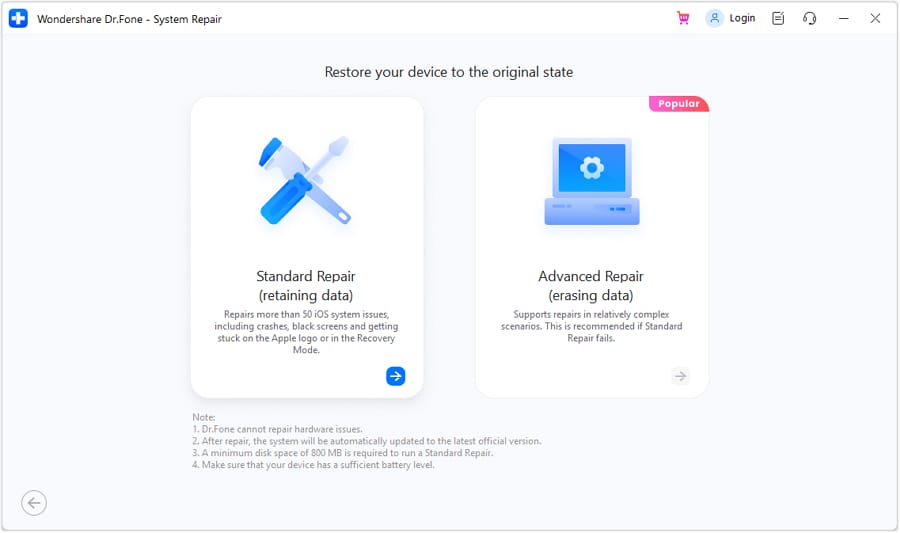
- The application will automatically detect your device and its stable iOS firmware available. Confirm your choice and click on the “Download” button.
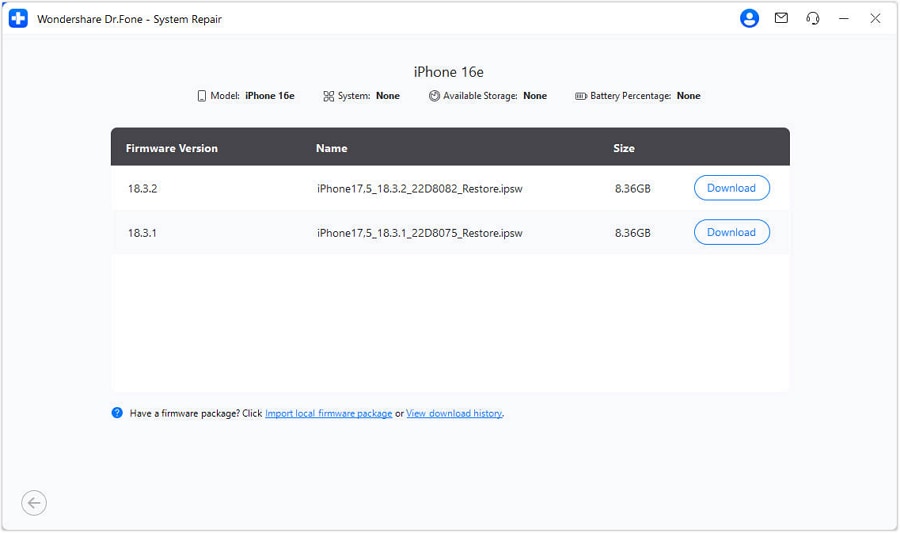
- Now, the application will start downloading the firmware version supporting your iPad. Since it might take a while to complete the downloading, it is recommended to not close the application in between or disconnect the device.
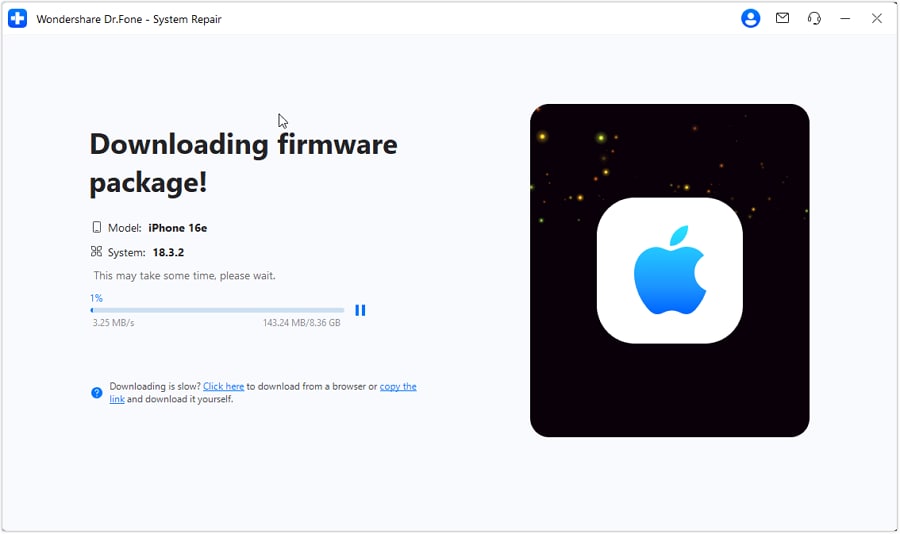
- After when the downloading is completed, Dr.Fone will verify your device to make sure if everything is alright. Don’t worry, it will be completed in a jiffy.
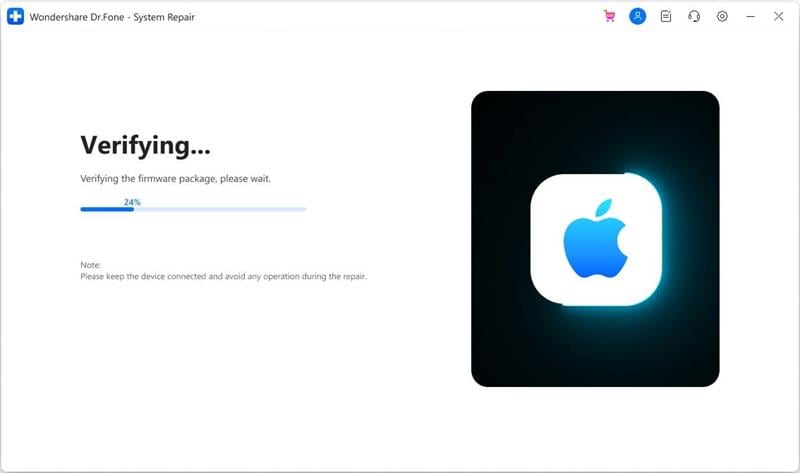
- That’s it! Once everything is verified, the application will let you know. You can just click on the “Repair Now” button to start the process.
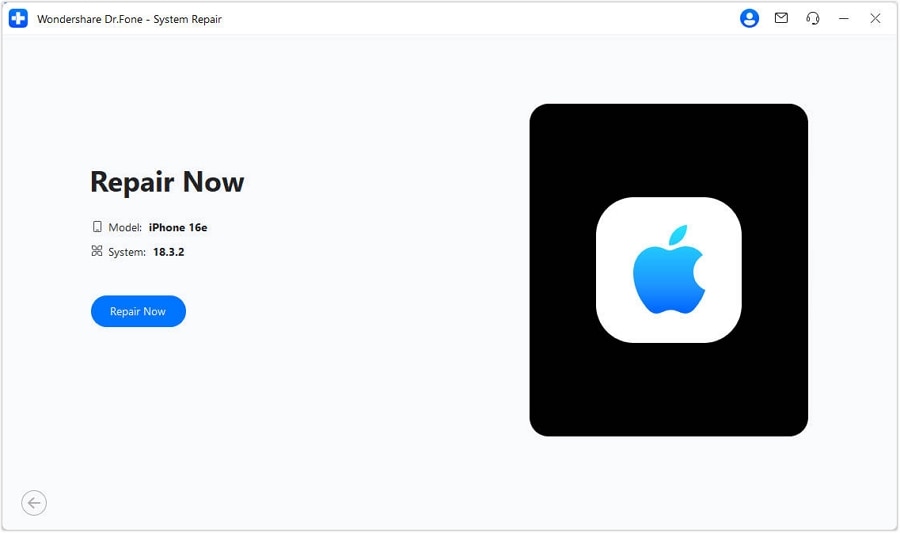
- The application will install stable firmware on your connected iPad. It might be restarted a few times in the process – just make sure that it stays connected to the system. In the end, you will be notified when the system error is fixed, so that you can safely remove your iPad.
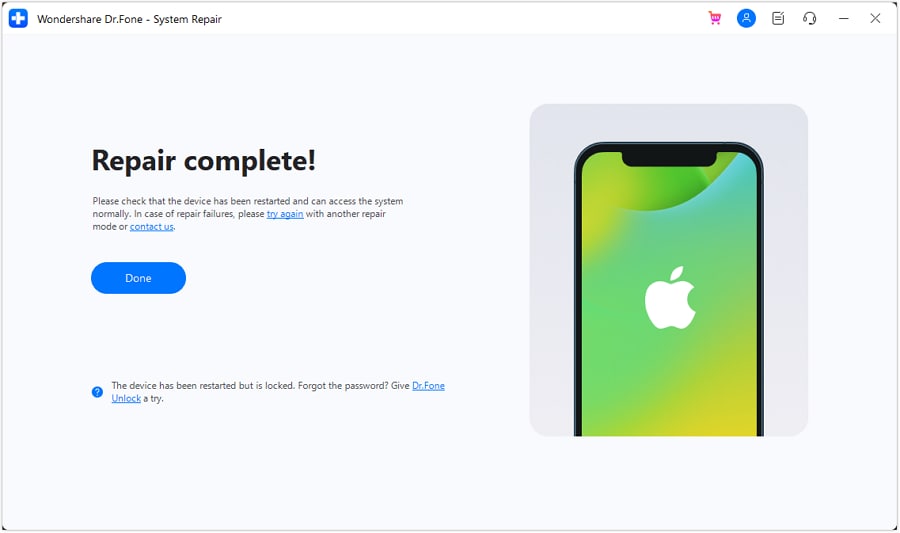
Even though this would be able to fix a minor issue like no WiFi icon on iPad, you can go with the “Advanced Repair” mode as well. While it will erase the existing data on your iOS device, the results would also be better.
Part 2: Wi-Fi Keeps Disconnecting on iPad
By following the above-listed suggestions, you can easily fix an issue like the iPad WiFi icon missing after iPadOS 16 update. Though, there are times when the device keeps disconnecting from a WiFi connection. In this case, you can consider the following tips and suggestions to ensure a stable WiFi connection for your iPad.
2.1 Place the device in a place with strong signals
Needless to say, your device will keep disconnecting, if it is not located within the range of the network. To check this, you can go to your iPad’s WiFi settings and see the strength of the connected WiFi network. If it has only one bar, then the signal is weak. Two bars usually depict an average signal while 3-4 bars are for a strong signal level. Therefore, you can just move your iPad within the range of the network and make sure it gets a strong signal.

2.2 Forget Wi-Fi and connect again
Sometimes, there is an issue with the WiFi network that makes the connection unstable. To fix this, you can simply reset the WiFi network. This can be done by forgetting the WiFi network first and later reconnecting it. To do this, go to your iPad’s Settings > General > WiFi and tap on the “i” (info) icon adjacent to the connected WiFi network. From the provided options, tap on the “Forget This Network” option and confirm your choice.

This will disconnect your iPad from the network and will no longer show it. Now, restart your iPad and connect to the same WiFi network again to reset it.
2.3 Reboot the Router
Most people ignore the possibility that there could be an issue with your network router as well. A physical malfunction or the overwriting of router settings could lead to your WiFi network disconnecting frequently. To fix this, you can simply reset your router. At the back of most of the routers, there is a “Reset” button. Simply hold it for a few seconds and let go to reset the router.

Alternatively, you can also remove the main power of the router, wait for 15-20 seconds, and plug it in again. This will automatically reboot the router.
Part 3: Wi-Fi Greyed out and Disabled on iPad
Apart from having a no WiFi icon on iPad, users often say that the WiFi option has been disabled or is greyed out on the device. If that’s the issue you are facing, then the following suggestions will help you get the WiFi option back on your iPad.
3.1 Ensure the Device is not Wet or Soaked
Mostly, the problem occurs when the iPad is physically damaged by water. Firstly, take a dry linen or cotton cloth and wipe your iPad with it. If your iPad has been soaked in water, then take the help of silica gel bags and place them all over the device. They will absorb the water from your iPad and will be of great help. Once your device is cleaned, you can dry it for a while and restart it only when it is safe.

3.2 Turn Airplane Mode on and off
When the Airplane Mode on the device is on, we can’t connect it to WiFi or a cellular network. Though, the trick of resetting the Airplane Mode on the device mostly fixes an issue like this. Simply swipe up the screen to get various shortcuts. Tap on the airplane icon to turn the mode on. After that, wait for a while and tap on it again to turn off the Airplane Mode.

Alternatively, you can also visit your iPad’s settings to access its Airplane Mode. Just unlock it and go to its Settings > General to find the Airplane Mode option. Toggle it on to enable it and turn it off after waiting for a while.
3.3 Turn off Cellular Data and Retry
In some iOS devices, smart WiFi lets us run both WiFi and cellular network at the same time. Additionally, if the cellular data is turned on, then it might clash with the WiFi network too. To fix this, you can just turn off the cellular data on your iPad and try connecting to the available WiFi network. You can do it via the shortcut of the cellular data option on its home. Also, you can go to Settings > Cellular and manually turn off the “Cellular Data” feature.

I’m sure that after following this quick yet informative guide, you would be able to fix issues like iPadOS WiFi won’t turn on. To make your job easier, the post has categorized different WiFi issues with several easy solutions. If the iPad WiFi icon is missing after iPadOS 16 update or you are facing any other related issue, then simply give Dr.Fone - System Repair (iOS) a try. A dedicated iOS system repairing tool, it can fix almost every kind of issue with your iPhone or iPad without much hassle. Since it will retain the existing data on your iOS device, you don’t have to worry a bit while using it.
iPhone Problems
- iPhone Hardware Problems
- iPhone Home Button Problems
- iPhone Keyboard Problems
- iPhone Headphone Problems
- iPhone Touch ID Not Working
- iPhone Overheating
- iPhone Flashlight Not Working
- iPhone Silent Switch Not Working
- iPhone Sim Not Supported
- iPhone Call Volume Low
- iPhone Software Problems
- iPhone Passcode Not Working
- Google Maps Not Working
- iPhone Screenshot Not Working
- iPhone Vibrate Not Working
- Apps Disappeared From iPhone
- iPhone Emergency Alerts Not Working
- iPhone Battery Percentage Not Showing
- iPhone App Not Updating
- Google Calendar not Syncing
- Health App Not Tracking Steps
- iPhone Auto Lock Not Working
- iPhone Screen Recorder No Sound
- Find My iPhone Not Sharing Location
- iPhone Battery Problems
- iPhone Media Problems
- iPhone Echo Problem
- iPhone Camera Black
- iPhone Won't Play Music
- iOS Video Bug
- iPhone Calling Problem
- iPhone Ringer Problem
- iPhone Camera Problem
- iPhone Front Camera Problem
- iPhone Not Ringing
- iPhone Not Sound
- iPhone Mail Problems
- Reset Voicemail Password
- iPhone Email Problems
- iPhone Email Disappeared
- iPhone Voicemail Not Working
- iPhone Can't get Mail connection
- Gmail Not Working
- Yahoo Mail Not Working
- iPhone Update Problems
- iPhone Stuck at the Apple Logo
- Software Update Failed
- iPhone Verifying Update
- Software Update Server Couldn't Be Contacted
- iOS update Problem
- iPhone Won't Update
- iPhone Connection/Network Problems















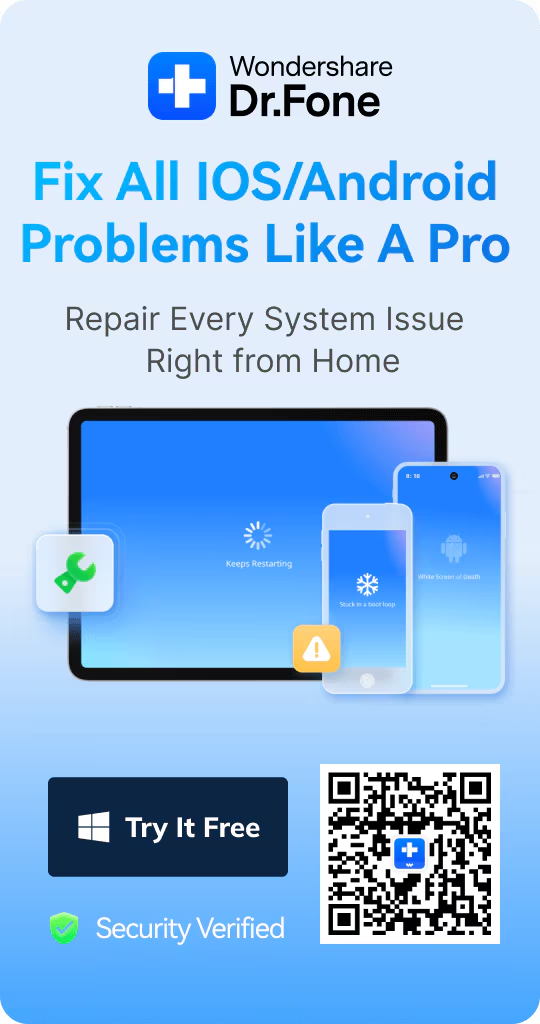

Daisy Raines
staff Editor
Generally rated4.5(105participated)